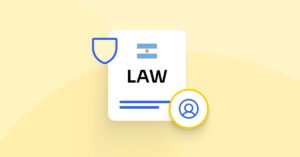Introduction
Countless website owners and operators rely on website tracking to gather valuable data, gain insight into user behavior, and identify user preferences. Website tracking involves tracking user activity and analyzing data using various methods and tools. The benefits of web tracking are wide-ranging and include targeted advertising, optimization of user experience, and website improvement. This article will explore various aspects of website tracking, including its methods, underlying reasons, and impact on user privacy. Additionally, we will take a closer look at the role that various internet tracking tools and technologies play in this process.
What is website tracking?
The process of tracking website activity entails closely observing and documenting user actions and behaviors as they interact with a website. This involves gathering a wealth of relevant information on user preferences, habits, and other relevant data about a website user, which is then analyzed to gain insight into usage patterns. The ultimate aim of this practice is to optimize website performance and provide tailored, personalized experiences for users based on their unique behaviors and preferences.
Methods of website tracking
There are various methods available to keep track of and efficiently handle the activities and incidents taking place on a particular website or operating system.
Tracking cookies
One commonly utilized method for monitoring website users’ activity is by implementing tracking cookies. These minute text files are automatically stored on a user’s device upon visiting a website and enable website owners to collect many details about the user’s browsing behavior, preferences, and interactions with the site. Such information is then utilized to tailor customized experiences and targeted advertising for users. Furthermore, these cookies can be used to track users across multiple websites and gather data for more comprehensive analysis.
Web beacons
Web beacons, also known as tracking pixels or clear gifs, are minute transparent images commonly added to web pages or emails. These images play a vital role in enabling website owners to collect data on user engagements, such as the opening of an email or browsing a specific web page. Web beacons are often used together with cookies to monitor user activity more accurately. With web beacons, website owners can better understand users’ behavior and preferences, allowing them to improve their website’s performance and provide a better user experience.
Tracking scripts
Tracking scripts can be useful if you want to monitor visitors’ activity on your website. These scripts are essentially small bits of code embedded within web pages, and they can help you keep track of user behavior, gather data, and send it to the website owner or a third-party service for analysis. One of the most commonly used types of visitor tracking scripts is the JavaScript tag, which is employed by analytics tools such as Google Analytics. By using tracking scripts, you can gain valuable insights into how visitors interact with your website, which can help you make informed decisions about improving the user experience and optimizing your site for better performance.
IP tracking
It’s common knowledge that websites utilize IP addresses to monitor and trace user activity. These IP addresses can disclose important information about the user, including their geographical location, internet service provider, and in some cases, their actual identity. Website owners often analyze this data to gain insights into web traffic patterns, identify suspicious activity, and provide customized content tailored to the user’s specific location. This practice has become quite commonplace in the online world, and users need to know how their data is being used.
Third-party tracking
Third-party tracking refers to the practice of utilizing tracking tools or services provided by external entities to gather information from a wide range of websites. These tools are designed to create highly detailed user profiles, which can be used to facilitate targeted advertising campaigns. By utilizing third-party tracking, advertisers can better understand user behavior and tailor their marketing efforts to reach the most relevant audiences. However, it’s important to note that this practice can raise concerns about data privacy and security, and users should be mindful of the information they share online.

Reasons for user tracking
There are multiple reasons that can help the process of observing the actions and behavior of users. Some of these reasons are the following:
Data collection and analysis
Website tracking is an essential component of data-gathering and analysis for web-based businesses. By using website analytics and carefully monitoring user activity, including behavior, preferences, and interactions, website owners can obtain valuable insights into various metrics crucial for optimizing their sites and enhancing user experiences. These metrics include demographic information, popular web pages, conversion rates, and other vital statistics that ultimately inform important decisions about improving website design and functionality. With the help of website tracking, web-based businesses can gain a deeper understanding of their users and how to serve their needs better.
Targeted advertising
Websites have the capability to track user data, which can be used to create personalized advertisements. This process involves observing user behavior and interests, allowing website owners and advertisers to tailor their ads to match individual preferences. This approach increases the effectiveness of marketing campaigns and benefits users by delivering relevant and targeted ads that align with their interests. This method allows advertisers and users to enjoy a positive and mutually beneficial experience.
Website optimization
One effective method for website owners to improve their website’s performance and user experience is closely monitoring user activity and behavior. By carefully examining data such as page views, click-through rates, and bounce rates of website visitors, operators can identify specific areas needing improvement, streamline website navigation, and optimize overall website usability. By utilizing these valuable insights, website owners can make informed decisions that ultimately lead to a more engaging and satisfying user experience.
User personalization
To enhance user experiences, website owners can leverage user data to provide personalized recommendations, suggestions, and content. This can be achieved by analyzing user behavior, interests, and browsing history to understand individual preferences and needs. By offering tailored content, users are more likely to engage with the website and find the information they seek, leading to a more satisfying user experience overall.
Security and fraud prevention
One of the ways to tackle the issue of fraudulent activities, such as identity theft, account hacking, and spamming, is through website tracking. This involves closely monitoring website visitor tracking and user activity patterns, which can help identify suspicious behavior. With this strategy, website operators and users can work together to ensure their online interactions are safe and secure. By detecting and preventing fraudulent activities, website tracking plays a crucial role in safeguarding the interests of all parties involved.

Implications for user privacy and security
The issue of user privacy and security is of paramount importance in today’s world of technology and data-driven services. With the increasing amount of personal information being shared online, several implications for customer data need to be considered.
Data privacy concerns
Many individuals need to be more aware of collecting and storing personal data through website tracking. This is because sensitive information, such as IP addresses, browsing history, and user profiles, can be at risk of being misused or accessed by unauthorized parties. Therefore, website operators must adhere to relevant privacy regulations, such as the General Data Protection Regulation (GDPR), to safeguard user data effectively. By doing so, website operators can help to ensure that user privacy is protected to the fullest extent possible.
Third-party tracking
It is commonplace for websites to utilize third-party tracking tools and services to gather information about their users. While these tools can offer valuable insights, they also have the potential to infringe on users’ privacy. Third-party tracking allows many websites to monitor user conduct across various platforms, resulting in a comprehensive profile of an individual’s online activities.
Protection and prevention
In today’s digital age, concerns about online privacy and tracking are valid. However, there are practical measures that you can take to safeguard your personal information. One option is to utilize browser extensions that block tracking cookies, which can be downloaded from reputable sources. Another strategy is to disable third-party cookies altogether. In addition, consider using a virtual private network (VPN) to conceal your IP address and enhance your online privacy. By implementing these tools and tactics, you can exercise greater control over your personal data and minimize the amount of tracking you encounter.
Best website tracking tools
Website owners need to have a clear understanding of how their online platforms are performing. One way to achieve this is through the use of top tracking tools for websites. These tools provide valuable insights into website traffic, visitor behavior, and performance metrics.
Google Analytics
When websites track users, Google Analytics is an exceptional tool that stands out from the crowd. With its robust set of features, website owners can delve deep into detailed analyses of traffic, user behavior, and conversion rates. This wealth of information provides valuable insights that enable websites to track users and make informed decisions, and optimize their website’s impact. By uncovering trends and patterns, Google Analytics empowers website owners to take action and improve their online presence. Overall, Google Analytics is a top choice for anyone looking to comprehensively understand their website’s performance and make data-driven decisions to achieve their goals.
Other tracking tools
Regarding web tracking, numerous tools and services are at your disposal, each offering a unique range of features and capabilities. From Adobe Analytics and Piwik PRO to Hotjar and Mixpanel, there are plenty of options. As a website operator, it’s essential to carefully consider each tool’s strengths and select the ones that align with your specific tracking and analysis requirements. By doing so, you can ensure you utilize the most effective and efficient tools for your website’s needs.
Conclusion
One of the most important aspects of website management is understanding user behavior in order to optimize website performance and provide personalized experiences. This is where website tracking comes into play. In order to collect and analyze data, various methods, such as tracking cookies, web beacons, and IP tracking, are utilized. However, it is crucial to address user privacy concerns and comply with regulations to protect personal data. By educating oneself about website tracking methods and purposes, individuals can make informed decisions about their online activities, take necessary precautions, and safeguard their personal information.






